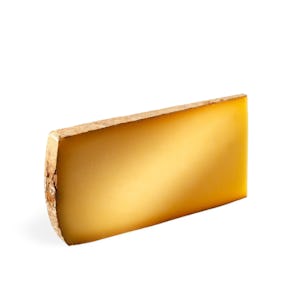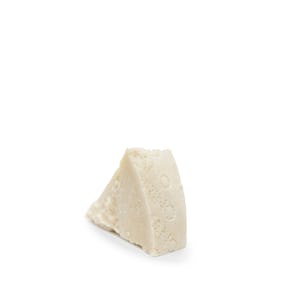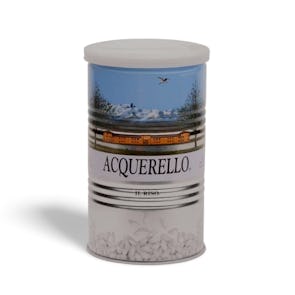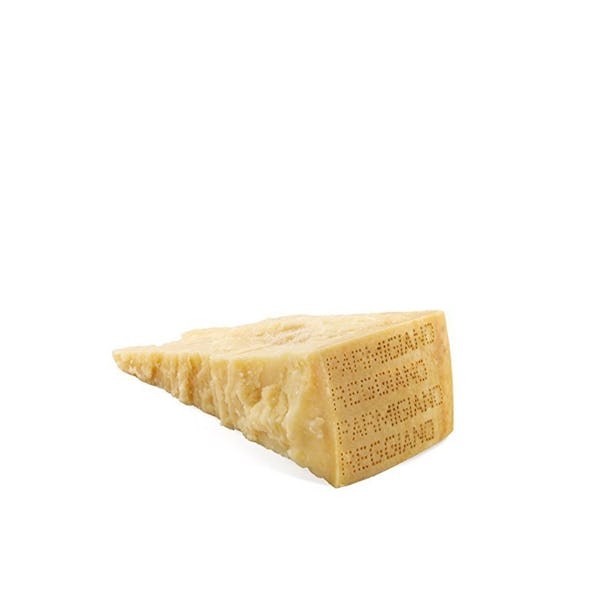
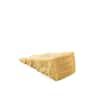
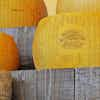

Parmigiano Reggiano DOP Stravecchio 36 months
The King of Cheeses
(Monday Dec 22 , 2025)
Tasting Notes from the Curator
Real Parmigiano Reggiano has a hard, gritty texture and is fruity and nutty in taste unlike regular Parmesan that has bit of a bitter taste. During maturation, Parmigiano-Reggiano gains its typical granular structure, and when cut it into slivers, it becomes crumbly and soluble. Delicious, easy to digest and with a host of nutritional benefits, Parmigiano-Reggiano always exceeds expectations. The unique taste of a product made without additives, with its concentration of proteins, vitamins, calcium and mineral salts make it perfect for all ages and for all situations, a ready source of useful energy for everyone.
Pairings
Parmigiano Reggiano cheese is mostly grated over pastas ,most famously used for the Classic Italian Carbonara recipe. It is also used in soups and risottos. Some prefer to eat as is. Pairs well with Pinot Grigio, Pinot Blanc,off-dry Riesling or even Gewurztraminer. All of which offer natural sweetness that can balance out the saltiness of the Parmigiano Reggiano nicely.
Protected by Tradition
Parmigiano Reggiano has been guaranteed for over seventy years by the Consortium and, above all, has been loved for over nine centuries for its excellent and inimitable flavour. An unmistakable and unique product for its aroma and taste, the craft of its production, its extraordinary journey through a landscape of rivers, plains and hills, and its unparalleled balance of knowledge, man’s passion and nature’s bounty.
FREQUENTLY ASKED QUESTIONS ABOUT PARMIGIANO REGGIANO
What’s parmigiano reggiano?
Parmigiano Reggiano is referred to as the “King of Cheeses’”. It is an italian unpasteurized cow’s milk cheese that is hard and usually produced in large wheels.
What does parmigiano reggiano mean?
“Parmigiano” is the Italian adjective for Parma and “Reggiano” for Reggio Emilia. It is considered a protected product, carrying the Protected Denomination of Origin (PDO) designation.
How to pronounce parmigiano reggiano?
To pronounce parmigiano reggiano, refer to these phonetics: pahr-mee-DJAH-noh rehd-DJAH-noh The letter “g” or letters “gg” are pronounced as “dj” and “ddj” respectively.
What does parmigiano reggiano taste like?
Parmigiano Reggiano is one of the cheeses that taste better aged. It packs a rich flavor and gritty texture. It has a slightly fruity and nutty taste but is also savory and sharp. The older it is aged, the stronger this sharp flavor comes out.
What is parmigiano reggiano used for?
Parmigiano reggiano has many uses but the most common is for this cheese to be grated over pasta dishes, soups, salads, and risottos. On another note, they can also be eaten on its own alongside some charcuterie and wine.
How to eat parmigiano reggiano?
The best way to eat parmigiano reggiano is to appreciate it as it is. Break the cheese into small, rough pieces and eat this way. As compared to grated parmigiano reggiano, eating it this way allows for more exposure in your tongue, giving a full blow of its complex flavors.
What is the common parmigiano reggiano and wine pairing?
The most common wine pairing for parmigiano reggiano are crisp and rich white wines that offer a natural sweetness that can balance the cheese’s saltiness. You may opt for Pinot Grigio, Pinot Blanc, Riesling or even Gewurztraminer.
Where does parmigiano reggiano cheese come from?
Parmigiano reggiano cheese comes from the Italian provinces of Parma, Reggio Emilia, Modena, Bologna and Mantua.
How is parmigiano reggiano made?
Parmigiano reggiano is made with 550 liters of milk for each wheel. The milk is slowly coagulated with the addition of rennet. The curd is broken down into granules & cooked in a large cauldron that makes it form a single mass. The cheese mass gives rise to twin cheese wheels.
Why is parmigiano reggiano so expensive?
Parmigiano reggiano is expensive due to the slow and long process it takes to create a single wheel. It takes a minimum of 12 months, the longest among all the PDO cheeses. After which, each wheel is inspected to see if it is worthy to be released or if it needs to be matured up to 24, 36, 40 months and more.
Is parmigiano reggiano worth it?
Parmigiano reggiano is worth it as it is a cheese protected and quality inspected by the Consorzio del Formaggio Parmigiano-Reggiano. You can assure its pristine taste that has been upheld by years of tradition. The taste is exceptional.
Does parmigiano reggiano melt?
Parmigiano reggiano is a dry cheese with less water content. It does not melt well unless it is mixed with a liquid to make a sauce.
Does parmigiano reggiano have lactose?
Parmigiano Reggiano does not contain lactose. Its absence is a natural accepted part of its process in order to achieve its taste and texture.
Is parmigiano reggiano lactose free?
Yes, parmigiano reggiano is lactose free. It does not contain any lactose.
Is parmigiano reggiano pasteurized?
Parmigiano reggiano is not pasteurized. Parmigiano Reggiano cannot be called as is unless it is made from raw milk.
Is parmigiano reggiano halal?
Traditionally made Parmigiano reggiano is made using rennet, a natural enzyme and by-product of mammals. Since rennet is a restricted or haram in a Muslim’s diet, it is not Halal. But there exists Halal Parmigiano Reggiano recognized by Halal Italia, the Italian reference body for Halal certification in the food sector.
Is parmigiano reggiano vegetarian?
Parmigiano reggiano is not vegetarian due its usage of rennet, an enzyme that’s found in the lining of a goat or calf’s stomach.
Is parmigiano reggiano vegan?
Parmigiano reggiano is not vegan due its usage of rennet, an enzyme that’s found in the lining of a goat or calf’s stomach.
Is parmigiano reggiano kosher?
Traditionally, parmigiano reggiano is not kosher but this has slowly changed over the years with the recognized and certified production of Kosher Parmigiano Reggiano produced by Bertinelli farm. Only Bertinelli PDO Parmigiano Reggiano received kosher certification from OK Kosher Certification.
What is the difference between parmigiano reggiano vs parmesan?
The difference between parmigiano reggiano vs parmesan is the usage of the term and how each cheese is regulated. Parmigiano reggiano follows the traditional compliance and laws governing production. Parmesan is not regulated and is often used as a loose term for similar production outside of the official Parmigiano reggiano area (worldwide) and sometimes for imitation parmigiano reggiano cheese.
What is the difference between parmigiano reggiano vs pecorino romano?
The difference between parmigiano reggiano vs pecorino romano is the taste and milk used. Parmigiano reggiano, made with cow’s milk, is nutty, hard and dry. Pecorino romano, made with sheep’s milk, is soft, tangy and saltier.
What is the difference between parmigiano reggiano vs grana padano?
The difference between parmigiano reggiano vs grana padano is very distinct. Grana Padano is made over a much larger area and is generally cheaper than parmigiano reggiano. Grana Padano is allowed the use of preservatives and matures more quickly.
Parmigiano Reggiano has a stronger, complex, nuttier and saltier taste while Grana Padano has a softer, subtler taste. The latter is used more for cooking while the more premium Parmigiano Reggiano is grated or eaten in chunks.
Where to buy real parmigiano reggiano?
You can buy real parmigiano reggiano in the Philippines via The Bow Tie Duck. The Bow Tie Duck can deliver real and authentic parmigiano reggiano, aged for at least 18 months, all over Metro Manila and neighboring cities.
Storage Instructions
How to store parmigiano reggiano?
Parmigiano Reggiano should be kept in glass or plastic containers, or wrapped in food- grade plastic film. If the come sliced or as portions in vaccum packs, be sure to refrigerate it after purchase to maintain the best flavor and longest life. Store it in the refrigerator between 4 and 8°C. Parmigiano Reggiano should never be frozen.
How long does parmigiano reggiano last?
Parmigiano Reggiano matured for 12-18 months has a higher moisture content and can only be kept for max 15 days in the fridge once opened or exposed. Parmigiano Reggiano matured for at least 24 months, kept for 1 month max.
Can parmigiano reggiano be frozen?
Parmigiano reggiano should not be frozen.

